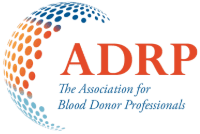Confronting the challenge of gender nonconforming donors: A blood center’s three-year experience
Full article available for purchase in link provided
Authors
Vanessa Reynolds, Nancy L. Van Buren, Jed B. Gorlin
Abstract
Background
Blood center organizations (BCOs) have traditionally offered two gender choices (male or female) on the donor history questionnaire (DHQ). Our BCO was one of the first in the United States to offer additional options on our DHQ to improve the experience for gender nonconforming donors.
Study Design and Methods
Three years of data were analyzed from all blood donation visits between March 2019 and March 2022. Donors were stratified by gender categories and generation as follows: Gen Z, Millennial, Gen X, Boomers, and Silent. First time donor status, donor deferrals and infectious disease rates were evaluated for each category.
Results
Donor gender makeup included 127,072 (99.78%) Male/Female (M/F) and 282 (0.22%) Trans/Other (T/O) donors. The return rate for first-time donors was 36.75% for M/F donors compared to 33.84% for T/O donors. The generational breakdown of our T/O donors is 71.28% Gen Z, 21.99% Millennial, 3.19% Gen X, 3.55% Boomers and none from the Silent Generation. Comparing high risk DHQ deferrals, there were 719 (0.57%) M/F deferrals and 18 (6.38%) T/O deferrals. Disease marker testing resulted in 2314 (0.56%) deferrals of M/F donors compared to 2 (0.41%) T/O deferrals.
Conclusion
Increased gender options on the DHQ allowing gender diverse self-identification enhances inclusivity. Transgender and nonbinary individuals accounted for a minority of donors, most of whom are younger, and have a comparable return rate to M/F donors. Shifts in donor policies can ensure inclusivity of this diverse population and provide an opportunity to expand the base of eligible donors.
June 2, 2023
Related Resources
Engaging blood donors as advocates Social media preferences and associations with marketing
Background: Various critical medical procedures would become impossible without blood donations—saving lives in emergencies, surgeries, and chronic conditions like thalassemia. Therefore, it seems crucial to enhance donor recruitment and ensure…
Rethinking the role of older donors in a sustainable blood supply
INTRODUCTION Many countries, particularly high human development index countries, are facing the challenge of an aging population.1 For Blood Collection Agencies (BCAs) in these countries, an aging population poses two…


